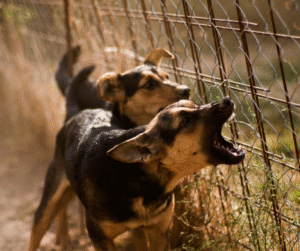NOTE: This is not aimed at any groomer in particular and is written as a general article from years of research and work as a groomer. Once I become a positive trainer and learnt how to read Canine Body Language I was horrified at how I had forcefully handled dogs for years as a dog owner and as a certified groomer.
Dogs live in our world and are expected to conform to how we want them to behave. For dogs this puts them into a totally alien environment where they are must be prepared to submit to such procedures as brushing, washing, not chewing, digging or barking. How do we make dogs do this?
In an ideal world they slowly and systematically become trained to our way of thinking. Brushing, washing and clipping are pleasurable activities they often experience that make them feel good. They understand that barking at 3 am in the morning is not acceptable and that the $200 pair of new shoes is not the same as the well chewed old pair of shoes they found in the laundry. They grow up in environments where they have not learnt to be frightened of novel events. Their fears are taken into consideration by trained professionals when being handled.
Sadly however this is not the case for some dogs. For a number of reasons they are scared of noises, scared of strangers and scared of procedures that are required to keep them happy and healthy in our human world. These scared dogs are presented regularly at grooming salons and veterinary clinics where it is expected they will submit to the procedures required or else. Dogs need to be clipped, washed, have nails trimmed and brushed. Vets, veterinary technicians and groomers are not always trained in the best methods to use to get a scared dog to submit to these procedures. Often they fail to realize just how terrified the dog is.
All of these places are busy and commonly the procedure must be done in the fastest possible time and dogs are expected to “deal with it”. A technique known as flooding is employed.
The concept behind flooding is simple – force the dog to encounter a stimulus that would generally elicit a flight or fight response, but prevent the dog from using those two coping mechanisms to deal with the stress. The hope is that when the dog experiences that nothing scary happens from the encounter – they will learn that the flight or fight response isn’t necessary and will therefore put them on the path of a more normal behavior for that situation.1
Flooding works on the theory that the body cannot keep up a stressed out state of alarm forever and that they will eventually replace the fear they feel with a feeling of relaxation. It is an old fashioned psycho-therapeutic method used on humans to overcome phobias. Imagine that you are scared of spiders and in order to prove that spiders won’t hurt you are LOCKED into a very small room and thousands of spiders are released. Sooner or later the theory is that you will come to love spiders. If it works it works very fast but only when applied on the right phobia by trained personnel under controlled conditions using psychologically proven relaxation techniques and only when the phobia is causing significant life disturbances and as a last resort.
This technique is seen regularly on television as a cure all for all manner of behavioral problems and every day thousands of vets, vet technicians and groomers are doing it all over the world. So why should this technique not be used?
- The experience is traumatic and the fear is often not cured just suppressed with the dog learning to exhibit learned helplessness while the stress hormones evoked still circulate at very high levels in the dog.
- The most common side effect is enhanced fear.
- Other techniques such as systematic desensitization take too long and most people don’t understand the difference between this and flooding and are not trained in these processes.
- It is often done with significant positive punishment and physical negative reinforcement resulting in the fact that people are becoming unable to tell when a dog is shut down and they believe that a quiet dog is calm or submissive when in fact they are far from calm from the point of view of their nervous system.
- Because we no longer believe dogs deserved to be punished for normal or scared behaviors.
- Because there is now an understanding that dogs need socialization and experience of scary events from an early age
Victoria Stillwell in her blog on Positively.com makes the following comment about the use of flooding:
|
Is flooding still an appropriate technique in this modern age?
NO
Groomers, vet technicians and vets should be willing to adopt more humane methods when it comes to dealing with dogs and cats that are brought in for their care. If flooding is deemed to be, after everything else has been tried, the most appropriate method to use it should only be done by professionals specifically trained in the procedure. Pet owners should insist that their dogs are not traumatized in the process of being cared for by pet care professionals.


Kareema
Healing Energy Animals
Kareema is the owners of Healing Energy Animals where devil dogs, horrible horses and crazy cats are turned into perfect pets using Relationship Animal Training and over 50 years of experience training a wide variety of animals.
Healing Energy Animals provides owners and pet professionals assistance with with common pet behavior training, feeding and grooming issues such as barking, escaping, scratching, aggression and fleas. Kareema consults and writes widely on a range of pet care issues for owners and also assists pet care professionals in setting up and growing their businesses by the provision of customer handling advice, sales and marketing strategies and up to date product information that allows for the differentiation of their pet care business from their competitors.
Healing Energy Animals is an Australian business but operates worldwide via the provision of virtual services.








